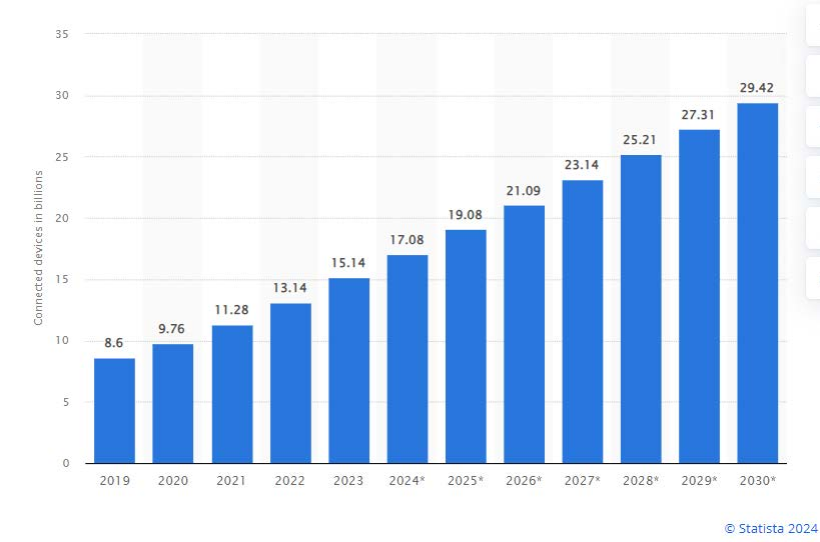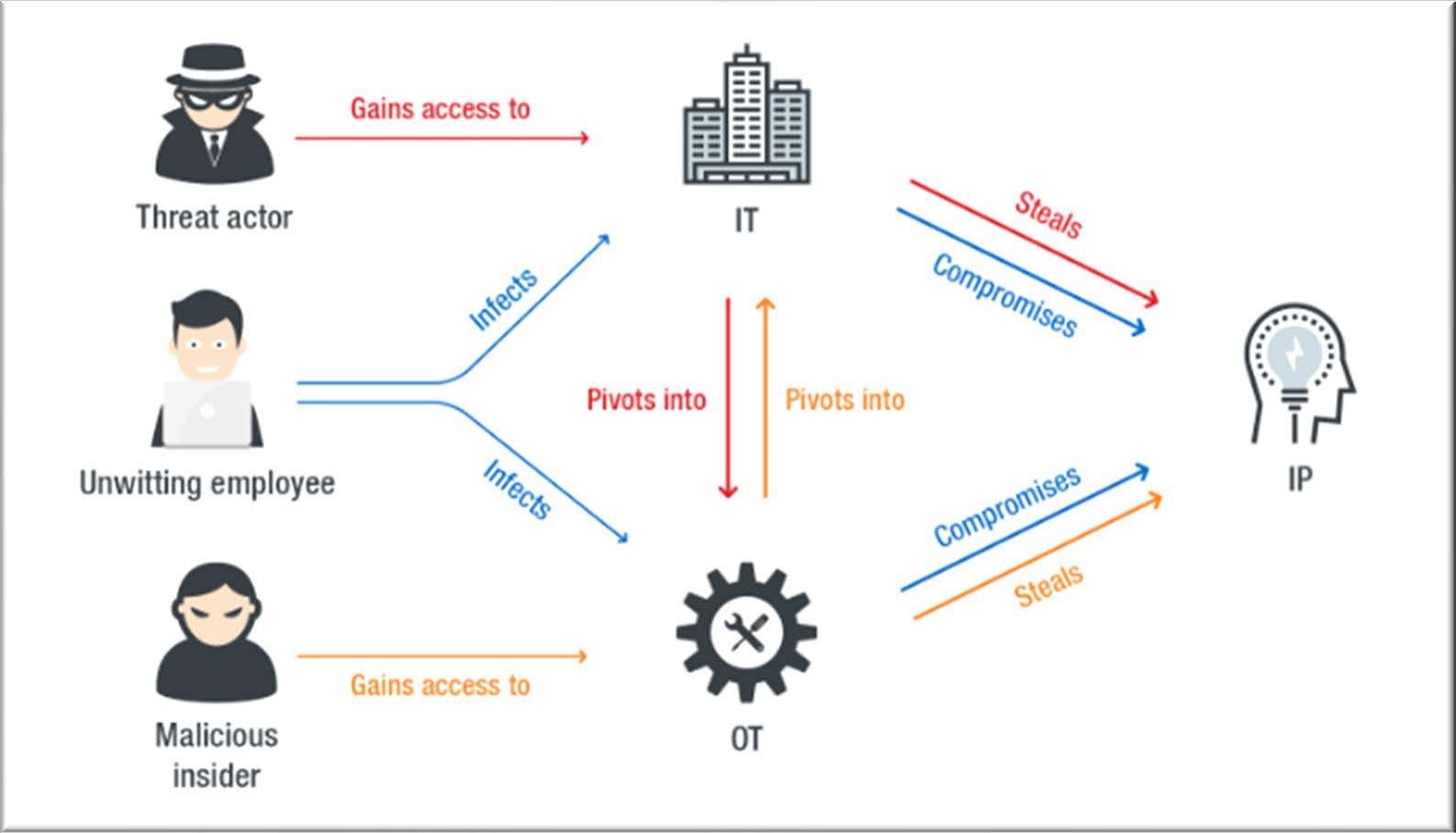Introduction to Industry Evolution
I4.0 Development
- Initially the idea of industry 4 was turned into the “High-Tech Strategy 2020” action plan in 2012 by the German government. Soon dozens of other governments developed their own initiatives, all similar in purpose, but different in execution and scope. 最初,“工业4.0”的理念在2012年由德国政府转化为“高科技战略2020”行动计划。随后,几十个其他国家的政府也制定了自己的类似举措,虽然目标相似,但执行方式和范围各有不同。
- China developed “Made in China 2025”; UK introduced “Future of Manufacturing” in 2013; the European Union developed “Factories of the future” in 2014, Singapore came out with its “RIE2020” plan; and the USA launched the “Manufacturing USA” initiative in 2014. 中国制定了“2025中国制造”计划;英国在2013年推出了“制造业的未来”计划;欧盟在2014年制定了“未来工厂”计划;新加坡推出了“RIE2020”计划;美国在2014年启动了“制造业美国”倡议。
- Even, though industry 4 was used widely, it was officially first used in late 2015 and early 2016 in Germany by Klaus Schwab, Founder and Executive Chairman of the World Economic Forum (WEF). 尽管“工业4.0”这一术语被广泛使用,但它在官方层面首次使用是在2015年底和2016年初,由世界经济论坛(WEF)创始人兼执行主席克劳斯·施瓦布(Klaus Schwab)在德国提出。
- I4.0 encompasses a wide range of advanced technologies, such as digital twins, artificial intelligence, high-speed wireless/wired networks, cloud computing and virtualization which is focused on creating smart products, smart procedures and processes, smart factories and smart nations. 工业4.0涵盖了广泛的先进技术,例如数字孪生、人工智能、高速无线/有线网络、云计算和虚拟化,其核心目标是创造智能产品、智能程序和流程、智能工厂以及智能国家。
- KPMG predicts enterprises will spend $232 billion i4.0 by 2024. 毕马威预测,到2024年,各企业将在工业4.0领域投入2320亿美元。
Trends and Driving Forces for I4.0
Industrial IoT (IIoT)

- The Industrial (IoT) is the use of Internet of Things (IoT) technologies in industry. The driving philosophy behind the IIoT is that smart machines are better than humans at accurately, consistently capturing and communicating data. 工业物联网(IIoT)是指在工业领域(Industry)中使用物联网(IoT)技术。其核心理念是智能机器在精准、持续地捕获和传递数据方面比人类更胜一筹。
- Gartner estimates that 5.5 millions new things will get connected every day, with a total of 15.14 billions connected things in 2023 and in 2030, this number reached around 30 billions. Gartner估计,每天将有550万个新的设备联网,总计到2023年有151.4亿个联网设备,而到2030年,这一数字将达到约300亿个。
- Over 2 Million IoT Devices Vulnerable to Complete Takeover. Smart home security devices most at risk in IoT-targeted cyber attacks. 超过200万个物联网设备面临完全被接管的风险。智能家居安全设备在针对物联网的网络攻击中最易受影响。
- The global industrial IoT market is expected to reach $1,119.4 billion by 2028, increasing at a rate of 17.0% from 2022 to 2028. 全球工业物联网市场预计到2028年将达到11194亿美元,从2022年到2028年年增长率为17.0%
Cloud Computing
![[Pasted image 20250401232953.png#pic_75center|]]
-
Cloud computing is a technical term that emerged in 2006 all over the IT world. 云计算是一个技术术语,起源于2006年,迅速风靡整个IT行业。
-
The practice of using a network of remote servers hosted on the Internet to store, manage, and process data, rather than a local server or a personal computer. 它指通过互联网托管的远程服务器网络来存储、管理和处理数据,而非使用本地服务器或个人电脑。
-
You can access as many resources as you need, almost instantly, and only pay for what you use. 您可以几乎即时地访问所需的资源,并且只需为实际使用的部分付费。
-
According to LinkedIn, Cloud Computing related skills were most requested skills by companies in 2021/2022. 根据LinkedIn的统计,云计算相关技能是2021/2022年企业最需要的技能。
-
Processing of information retrieved by IIoT devices from cloud-based systems. 通过云系统处理工业物联网(IIoT)设备获取的信息。
-
The most common attack goes against its availability, by means of a Denial of service (DoS) attacks and the confidentiality and integrity of the stored data. 最常见的攻击是通过拒绝服务(DoS)攻击来针对其可用性,以及针对存储数据的机密性和完整性。
Challenge of Using Cloud Computing
- Concern about the security of data
![[Pasted image 20250401233234.png#pic_75center|]]
AI and Big Data
![[Pasted image 20250401233418.png#pic_50center|]]
- AI & Big Data is emerging as one of the most potentially disruptive themes in the digital world. 人工智能(AI)和大数据正在成为数字世界中最具颠覆潜力的主题之一。
- As the world’s data grows exponentially, AI capabilities are tracking close behind, the far-reaching implications of which are becoming clearer every day. 随着全球数据呈指数级增长,人工智能技术紧随其后,其深远影响日益显现。
- Big Data is AI’s fuel. It is both what trains AI to become powerful and what AI systems are ultimately applied to in order to generate real-world insights. 大数据是人工智能的“燃料”。它既是训练AI以增强其能力的来源,也是AI系统最终应用于生成实际洞察的对象。
- The global Big Data and AI market is worth $274 billion. 97.2% of organizations are investing in big data and AI 全球大数据和人工智能市场规模达到2740亿美元,97.2%的组织正在投资于大数据和人工智能领域。
- However, this development hasn’t gone unnoticed by online criminals, as Cyber crimes have gone up 400%. 然而,这一发展并未逃过网络犯罪分子的注意,网络犯罪率已增长了400%。
- Data breaches are a top trend in the cybercrime world that shows no sign of slowing any time soon. 数据泄露是网络犯罪领域的一大趋势,而且短期内并没有减缓的迹象。
Digital Twins
![[Pasted image 20250401233801.png#pic_50center|]]
- Global industries have achieved a tremendous technological transformation due to the linkage between the digital and physical worlds and Digital twin technology has played an important role in enhancing this convergence. 全球各行业由于数字世界与物理世界的联结,已经实现了巨大的技术变革,而数字孪生技术在促进这种融合中发挥了重要作用。
- A digital twin is a virtual representation or digital replica (copy) of assets, people, processes, systems, devices, and places. 数字孪生是资产、人员、流程、系统、设备和场所的虚拟表示或数字副本(复制品)。
- Digital twins are created using digital twin technology, which integrates the internet of things (IoT), software analytics, artificial intelligence, and special network graphs to replicate physical assets or processes (physical twins). 数字孪生通过数字孪生技术创建,数字孪生技术结合了物联网(IoT)、软件分析、人工智能和特殊的网络图,用于复制物理资产或流程(物理孪生)。
- Companies can use the digital copies of their products to perform product improvements. They can also utilize digital twin technology to develop virtual prototypes of new products and get insights. 公司可以利用其产品的数字副本进行产品改进。他们还可以利用数字孪生技术开发新产品的虚拟原型并获得洞察。
- Even though Digital twins give organizations greater insight into the life cycle of these objects, this same level of insight and control can also open doors for malicious cyber attackers. 尽管数字孪生为组织提供了对这些对象生命周期的更深刻洞察,但同样的洞察和控制水平也可能为恶意网络攻击者打开大门。
Virtualization
-
A virtual copy of the Smart Factory which is created by linking sensor data (from monitoring physical processes) with virtual plant models and simulation models. 智能工厂的虚拟副本是通过将监测物理过程的传感器数据与虚拟工厂模型和仿真模型连接起来创建的。
-
In practice, a computer in Louisiana (USA) could make decisions about a production plan in China, and vice versa. 实际上,位于美国路易斯安那州的一台计算机可以决定中国的生产计划,反之亦然。
-
The main challenge is the: Secure information exchange between the physical assets and their virtual representations. 主要挑战是:在物理资产与其虚拟表示之间实现安全的信息交换。
-
Cyber-Physical Systems or “smart” systems refers to new generation of systems with integrated computational and physical capabilities that can interact with humans through many new modalities.
-
Examples of CPS include smart grid, autonomous automobile systems, medical monitoring, robotics systems, and automatic pilot avionics. Ensuring the security of cyber-physical systems, is one of the most complex problems in a wide range of defenses against cyber-attacks.
-
The reason is that these structures can become easy and open targets for cyber threats if the necessary cyber security measures are not taken seriously.
Smart Factories

- Manufacturing is becoming increasingly digitized as the industry is adopting automation, to a greater extent than ever before. 制造业正变得越来越数字化,因为该行业比以往任何时候都更多地采用了自动化技术。
- The Industrial Internet of Things (IIoT) is bringing artificial intelligence, cloud computing and robotics into factories. 工业物联网(IIoT)正在将人工智能、云计算和机器人技术引入工厂。
- Smart Factories will help the manufacturing industry considerably, as digital technology can offer greater efficiency in the production stage, better quality products with fewer mistakes, and more flexibility for working processes. 智能工厂将极大地帮助制造业,因为数字技术可以在生产阶段提供更高的效率、更少错误的高质量产品以及更灵活的工作流程。
- According to “swivelsecure” report, large manufacturers are incorporating the Industrial IoT in their operations and the Industrial IoT market in 2023 was estimated to be worth $394 billion. 根据“swivelsecure”报告,大型制造商正在将工业物联网整合到其运营中,而2023年工业物联网市场的估值为3940亿美元。
- Despite the benefits they offer, the connected nature of Smart Factories leaves the manufacturing industry open to a variety of potential cyber threats. 尽管智能工厂提供了诸多优势,但其连接性质使制造业容易受到各种潜在的网络威胁。
- The manufacturing industry is the third most targeted industry for cybercrime, just behind the finance and government sectors. 制造业是网络犯罪的第三大目标行业,仅次于金融业和政府部门。
- The EEF’s (UK) Cybersecurity Report found that while 91% of manufacturers are investing in digital technology, 35% said they are inhibited from fully investing due to cybersecurity concerns. 英国工程雇主联合会(EEF)的网络安全报告发现,虽然91%的制造商正在投资于数字技术,但35%的制造商表示因网络安全问题而无法全面投资。
Challenge: Susceptibility of IoT and AI Technologies to Cyber Attacks
- IoT and AI technologies are an integral part of smart manufacturing systems. 物联网(IoT)和人工智能(AI)技术是智能制造系统的重要组成部分。
- The concept of Industry 4.0 depends upon connectivity of devices across the whole ecosystem. 工业4.0的概念依赖于整个生态系统中设备的互联性。
- This interconnectivity creates security holes throughout the system, which can mean potentially compromised operations because from a security perspective it cannot be determined where the data is coming from or where it’s going at the other end. 这种互联性在整个系统中会产生安全漏洞,从安全角度来看,无法确定数据的来源或去向,这可能导致操作被潜在地破坏。
- Hence, data visibility is the biggest cybersecurity challenge for smart manufacturing on the factory floor. 因此,数据可见性是工厂车间智能制造在网络安全方面面临的最大挑战。
- There’s a lot to be gained by adopting Industry 4.0 technologies, and as its adoption continues significantly all over the world, the manufacturing industry becomes an increasingly appealing target for cyber attacks. 采用工业4.0技术可以带来许多益处,随着其在全球范围内的广泛应用,制造业正成为网络攻击日益吸引的目标。
Why Industry 4.0
![[Pasted image 20250402000008.png#pic_75center|]]
- While this brings benefits in lower costs and higher efficiency, it also increases the risks. 虽然这带来了成本降低和效率提高的益处,但也增加了风险。
- Industry 4.0 means opportunities and challenges. 工业4.0既意味着机遇,也伴随着挑战。
- It’s a challenge that cyber criminals are exploiting. 网络犯罪分子正利用这些挑战。